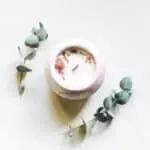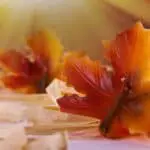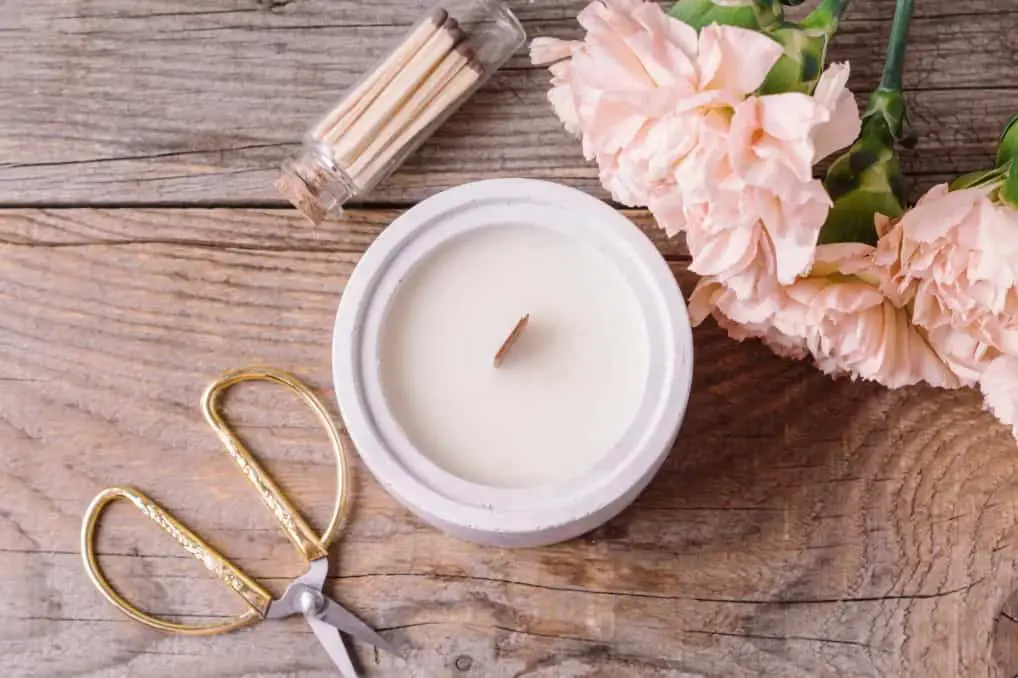
It’s no secret that bee species are one of our planet’s most valuable species. Honeybee and other pollinators helped to produce approximately $19bn worth of agricultural crops in the US last year, and that’s just one of their valuable benefits to our ecosystem. According to the Food and Agricultural Organization of the United Nations, approximately 80% of all flowering plants require pollination. Pollination is essential for growing many crops, both in terms of fertilizing fruit and vegetable crops and feeding livestock. For example, broccoli, asparagus, cucumber, and other vegetables rely upon bees for pollination, as well as fruits, including strawberries, apples, and apricots.
While there are other pollinating species, such as butterflies and moths, honeybees are recognized as the most effective and efficient pollinators. We often consider honeybees as the most important of all bee species. Still, a little research shows many other bee species are just as important and actually contribute even more to the species’ pollinating efforts. So, before we look more closely at the different species of bees, you might find in your yard and the benefits they bring to the wider environment, let’s look at what else bees bring to our planet.
Thousands of Bee Species

There are approximately 25,000 different bee species worldwide. Four thousand native bee species are found in the US, and the 25,000 different species are split into 4000 genera of bees which split down again into nine individual families. As well as pollination, these thousands of bees are beneficial to our environment in other ways, including:
1. Bee species encourage wild plant growth
Many species of wild flowering plants depend on insect pollinators. Bees are responsible for the production of a wide range of wild seeds, nuts, and berries, providing vital nutrition for wild animals.
2. Additional food source
Bees produce honey to provide for their hives and colonies. Humans, as it is obvious, harvest this honey, but it’s also a great additional source of food for wild animals, including insects, birds, and raccoons.
3. Bee species support biodiversity
Bees’ role as pollinators makes them vital to our ecosystem. They support the growth of many other forms of life, from trees and plants to the animals that rely on honeybees for food and shelter.
Despite bees’ vital role in protecting our planet, they are under considerable threat. There are multiple factors contributing to the honey bee population falling across the world. They vary from diseases to parasites and industrial pesticide use to the falling number of wild plants for food. Declining honey bee populations are a concern for all of us, and if lots of people make small changes, it’s certainly possible to make an impact. The most pressing survival threats to the world’s bees include:
- Climate change
- Invasive plants and bee species
- Habitat loss
- Industrial agriculture and pesticides
There are ways we can impact almost all these factors, from practical attempts to minimize climate change to petitioning for natural and organic pesticides. Bees are vital to the planet’s survival, at least in the way we know it, so action is necessary.
Top Ten Important Bee Species for Humankind
The bees that turn up in your yard aren’t always honeybees, and you may find a wide range of different pollinators buzzing around. The most popular (and useful) bee species to look out for include:
1. Bumble bees

Everyone recognizes the plump, friendly body of the bumble bee. It refers to over 250 different bees in the Bombus genus. As well as being easy to spot, the bumble bee is also amongst the hardest working pollinators in your yard. Bumblebees are one of the small percentages of the honeybee species that are actually eusocial. Their complex behaviors are based around group decisions, with the female queen and her daughters working and living together, communicating to survive and thrive.
If you want to encourage bumblebee in your yard, then let the clover grow. Clover is their favorite food to forage on, so an uncut lawn is a perfect treat.
2. Carpenter Bees

Carpenter bees have got something of a bad reputation. Most of us have only heard of them as they are known for burrowing into decking and porches. They can quickly become seen as nothing more than household pests, but they’re actually really good at pollinating too. Carpenter bees rarely do serious structural damage to the wood they turn into their nests, but they can create a bit of a mess.
Larger than other bee species, the carpenter bee has a metallic sheen. And only the females of this species are equipped with a sting. Like most other bee stings, they rarely choose to use it.
Carpenter bee is amongst the cleverest bee species, although you could mistake its cleverness for cheating. Rather than drinking nectar from the top of the flower, where the pollen is, it often tears a hole in its base and enjoys its feed that way.
3. Sweat Bees

Sweat bee is another top pollinator. From the Halictidae family, they also rely upon pollen and nectar-like most other bees. A small native species, the sweat bee, is regularly found in most yards. It is recognized as generalist feeders, happy to forage on a wide range of plants.
Sweat bees are usually solitary bees that burrow into the soil to make their nests. They love the taste of salt and will often land on you to lick the salt from your skin. They aren’t aggressive, so there is a very low risk of getting bee stings.
4. Mason Bees

Their name comes from their reputation as miniature versions of mason workers, as mason bees cleverly build their nests from mud and pebbles. These native bees don’t burrow into wood to make holes. They look for existing holes instead. They are happy to create nests in ready-made spaces such as drilling holes. Mason bees are very industrious, and just a few hundred mason bees do the same amount of work as 10,000+ honeybees. They are well-known for their role in pollinating fruit crops with almonds, blueberries, and apples among their favorites.
5. Squash Bees

If you grow any kind of gourd, squash, or pumpkin in your yard, you’ll soon see squash bees buzzing around. Squash bee plays a pivotal role in pollinating your native plant and helping the fruit to set. They get to work early in the day as the cucurbit flowers attached to these vegetables close in the early afternoon sun. As the name suggests, squash bee is specialized forages that only forage from the cucurbit plants for their pollen and nectar.
6. Leafcutter Bees

With the industriousness of mason bees, the leafcutter bee builds its home in tube-shaped cavities and narrow spaces. They are happy to use artificial nests and use carefully cut pieces of leaves to line their sleeping quarters. They forage mainly on legumes and are among the most efficient pollinators, working on flowers into the middle of summer. Their stings are also among the mildest of all bees.
7. Alkali Bees

When wellness experts began heralding alfalfa as the next superfood, alkali bees came into the spotlight. The alkali bee pollinates alfalfa and is one of the smaller bee species. Alkali bees’ bands incorporate greens and blues, as well as black and yellow. They nest in moistened, alkaline soils, which is how they get their name. They are native to the region to the west of the Rocky Mountains. Although alfalfa is their absolute favorite food, they’ll also happily tuck into clover, mint, onions, and some other wild plants.
8. Dwarf Carpenter Bees

Just like their bigger brothers, dwarf carpenter bees have excellent burrowing skills. They are tiny at just 8mm in length. That is why they often get overlooked when considered against other bee species. Despite their size, dwarf carpenters are highly skilled when it comes to extracting nectar from a wide range of wildflowers, from raspberry plants to goldenrod and many other species. Their small size means they can make their nests in the stems of plants or vines.
9. Polyester Bees

Polyester bees get their name from a unique and unexpected ability their females possess. Female polyester bees can create a natural polymer excreted from the glands in their abdomens. Cleverly, female polyester bees construct robust and protective polymer bags for their eggs. They fill the bags with sweet food to keep their larvae fed and protected when they hatch. The plastic bubbles are buried in the soil and have the additional protection of this unique natural polymer. Polyester bees are larger than many other species, and we know them as plasterers due to them using the same unique polymer to coat the walls of their nests.
10. Digger Bees

Digger bees, sometimes known as mining bees, are among the most commonly found types of bees seen across the country. There are 1,200 species of mining bee in North America, and they are average-sized and likely to be regularly spotted in your yard. They forage from the beginning of Spring and, depending on species, maybe generalist foragers or specialized in seeking out a certain type of plant. Their name gives an indication of how digger bees build their nests. They burrow deep into the ground and cleverly camouflage the entrance to their homes with leaves or grass. Much like the polyester bee, the female digger bee or mining bee is also able to protect her nest with a secreted substance. In this case, it provides waterproofing.
Considering a world without bee species.
Whether you simply enjoy seeing bees buzzing around your garden or are actively taking part in their conservation, a world without bees is not something anyone wants. While the extinction of all bee species would probably not lead to human extinction, it would be a disaster for the planet and our ecosystems as we know them. The domino effect of bees’ extinction would be evidenced in native plant species soon following suit. Once the plants are gone, animals too will find they have no food sources. The results would be devastating and irreversible.

Three out of four food crops worldwide depend upon pollinators, largely bees. They have a huge role in food supplies around the globe and, consequently, the global economy. Inadequate pollination results in reduced and lower quality crop yields. This has a knock-on effect on the overall effectiveness of agriculture and its contribution to the economy. Industrialization in the agriculture industry has become essential but poses one of the biggest threats to bee populations. Depriving bees of food sources and exposing them to hazardous chemicals is killing off whole species and making life near impossible for others. Putting bees under serious threat jeopardizes our food supplies and the balance of the ecosystem.
Small changes in the average household can help promote a better future for bee species.
If you have space in your yard, you can start by making it as bee-friendly as possible. Growing pollinating plants, leaving lawns to overgrow with bees’ favorites such as clover, and even building shelters and bee houses actively encourage their populations to thrive. Adding trees and shrubs to your backyard can also support bee populations as it provides the habitat they need to flourish.
You could also consider cutting out your use of chemicals from your garden and also your home. Consider all the harmful chemicals that go down the drain after a cleaning blitz. Organic and natural products are easily available, and you’re minimizing your impact on the environment and, therefore, the bees.
Saving the Bee species, and the Planet

The future without the many bee species we’ve looked at is not a very bright one to look forward to. The many species we’ve explored show just how diverse and fascinating bees can be and the many benefits they bring to our planet. Helping to create safe and abundant environments for bees has benefits that far outstrip just their needs. It’s an essential step towards protecting the planet and humankind too.






